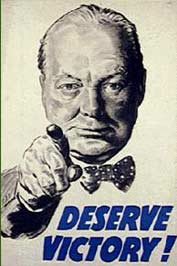
History
Before WWI developed, the British Empire already realized that its battle rifle, the Short Magazine Lee Enfield (SMLE) was already nearly obsolete. Compared to the German Mausers or US 1903 Springfield, its old-fashioned rimmed cartridge was underpowered and its design backwards after the amazing design changes of the previous decade. A new rifle, copying many of the features of the Mauser 98 was designed, as well as a new rimless cartridge of .276 caliber. However, the onset of WWI came too quickly for the UK to put it into production.
As it entered World War I, the UK had an urgent need for rifles and contracts for the new rifle were placed with arms companies in the United States. They decided to ask these companies to produce the new rifle in the old .303 caliber. The new rifle was termed the "Pattern 14." In the case of the P14 rifle, Winchester and Remington were selected. A third plant, a subsidiary of Remington, was tooled up at the Baldwin Locomotive Works in Eddystone,PA . Thus three variations of the P14 and M1917 exist, labeled "Winchester," "Remington" and "Eddystone."
When the U.S. entered the war, it had a similar extreme need for rifles. Rather than re-tool completely, the factories, under the close supervision of the US Army Ordnance Department, altered the design for caliber .30-06. Winchester produced the rifle at their New Haven, Connecticut plant and Remington at their main facility at Ilion, New York and at another plant in Eddystone, Pennsylvania. The M1917 Bayonet was also produced and used on several other small arms. Winchester produced 545,511 rifles; Remington about 545,541 and Eddystone 1,181,908.
Both P14 and M1917 rifles are noted for several design features. The rifle was designed with a rear receiver sight, protected by sturdy "ears," a design the proved to be faster and more accurate than the typical mid-barrel sight offered by Mauser, Enfield or the Buffington battle sight of the 1903 Springfield. Future American rifles, such as the 1903-A3 Springfield, M1 and M1 Carbine would all use such receiver sights. The M1917 sight was situated on an elongated receiver bridge, which added a great deal of weight to the action, as well as lengthening the bolt. This extra length created the need for the odd "dog-legged" bolt, which moved the bolt knob rearward. The M1917 action weighs 58 oz. versus 45 oz. for the 1903 Springfield.
The rifle maintains the British cock-on-close feature, in which the bolt's mainspring is loaded and the rifle cocked as part of the return stroke of the bolt, which the British believed aided rapid fire. Most bolt action designs after the Mauser 98 cocked as part of the opening stroke. The rifle has a characteristic "belly" due to a deeper magazine, allowing rifle to hold six rounds of the US .30-'06 cartridge. In a manufacturing improvement over the Mauser 98 or Springfield, the bolt handle serves as a third or emergency locking lug, should the two lugs at the front of the bolt fail. Virtually all commercial bolt action rifles since have copied this feature. The location of its massive safety on the right rear of the receiver has also been copied by most sporting bolt action rifles since.
The new rifle was used alongside the M1903 Springfield rifle and quickly surpassed the Springfield design in numbers produced and units issued. By November 11, 1918 about 75% of the AEF were armed with M1917s. After the armistice, M1917 rifles were disposed of as surplus or placed in storage for the most part, although Chemical Mortar units continued to be issued the M1917. American soldiers disliked the exceptional weight of the M1917, and favored "our" 1903 Springfield. More than twice as many Model 1917 Enfields rifles were used in WWI by US troops than 1903 Springfields.
At the time of the American entry in to World War II, the American Army was still issuing the M1917 to Chemical Mortarmen. Perhaps due to rifle shortages at the start of the war, the M1917 was also issued to artillerymen early in the war, and both mortarmen and artillerymen carried the M1917 in North Africa. Lt. Col. Charles E. Peterson (USAR, retired), a Major in the 101st Airborne in the Normandy action, reported seeing some M1917 rifles issued to rear-echelon troops in France during WWII. Otherwise, before and during World War II, stored rifles were reconditioned for use issue as reserve, training, and Lend-Lease weapons; these rifles are identified by having refinished metal (sandblasted and Parkerized) and sometimes replacement wood (often birch). Many were sent to Britain for use by the British Home Guard. These were prominently marked with a red paint stripe around the buttstock to avoid confusion with the earlier P14 that used the British .303 round. Others were supplied to the Nationalist Chinese forces and to the Free French, both of which can occasionally be seen in photographs being used in action.
A continuing source of debate among historians concerns what rifle was used by Sgt. Alvin York during his famous action against the Germans in WWI. While York's son has made mention that Sgt. York used a Springfield, the weapon issued to him was an M1917. (The film starring Gary Cooper as Sgt. York had him using an M1903 and a German Luger pistol.)
After WWI, a large number of M1917 rifles were released for civilian use through the NRA.
The bayonet for the M1917 was also used on all American trench shotguns.
Design
While developed at the same arsenal, the M1917 is not a version of the .303 caliber rifle of c. 1890-1955, the Lee-Enfield (such as the SMLE version). Both were developed at the Royal Small Arms Factory at Enfield (arsenal) in the United Kingdom. The M1917 was actually a development of the Mauser 98 rifle. Due to the use of rimmed cartridges in the P14, the magazine capacity for the smaller diameter 30-06 was 6 rounds, although stripper clips held only five cartridges.
The action was used as the basis for a variety of commercial and gunsmith-made sporting rifles between the world wars and after; Remington Arms redesigned it, removing the "ears" and changing it to cock-on-open, to become the Remington Model 30 series of rifles in the interwar period. Some (approximately 3000) M1917 rifles were produced in 7 mm and sold to Honduras around 1930. Additional surplus rifles were bought by European arms distributors and converted to 8x57 mauser, then sold for use in the civil war in Spain during the 1930's.
Service history
Used by U.S., UK, the Philippines (also France and China under "Lend Lease")
Wars
World War I and World War II
Production history
Designed 1917
Number built 2,193,429 total
Specifications
Weight 9 lb. 3 oz. (4.17 kg)
Length 3 ft. 10.25 in. (1175 mm)
Barrel length 26.0 in (660 mm)
Cartridge .30-06 Springfield (7.62x63mm)
Action Modified Mauser turn bolt
Muzzle velocity 2700 ft/s (823 m/s)
Feed system 6-round magazine, 5-round clip fed reloading





